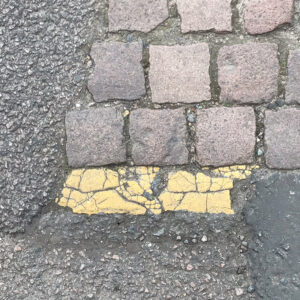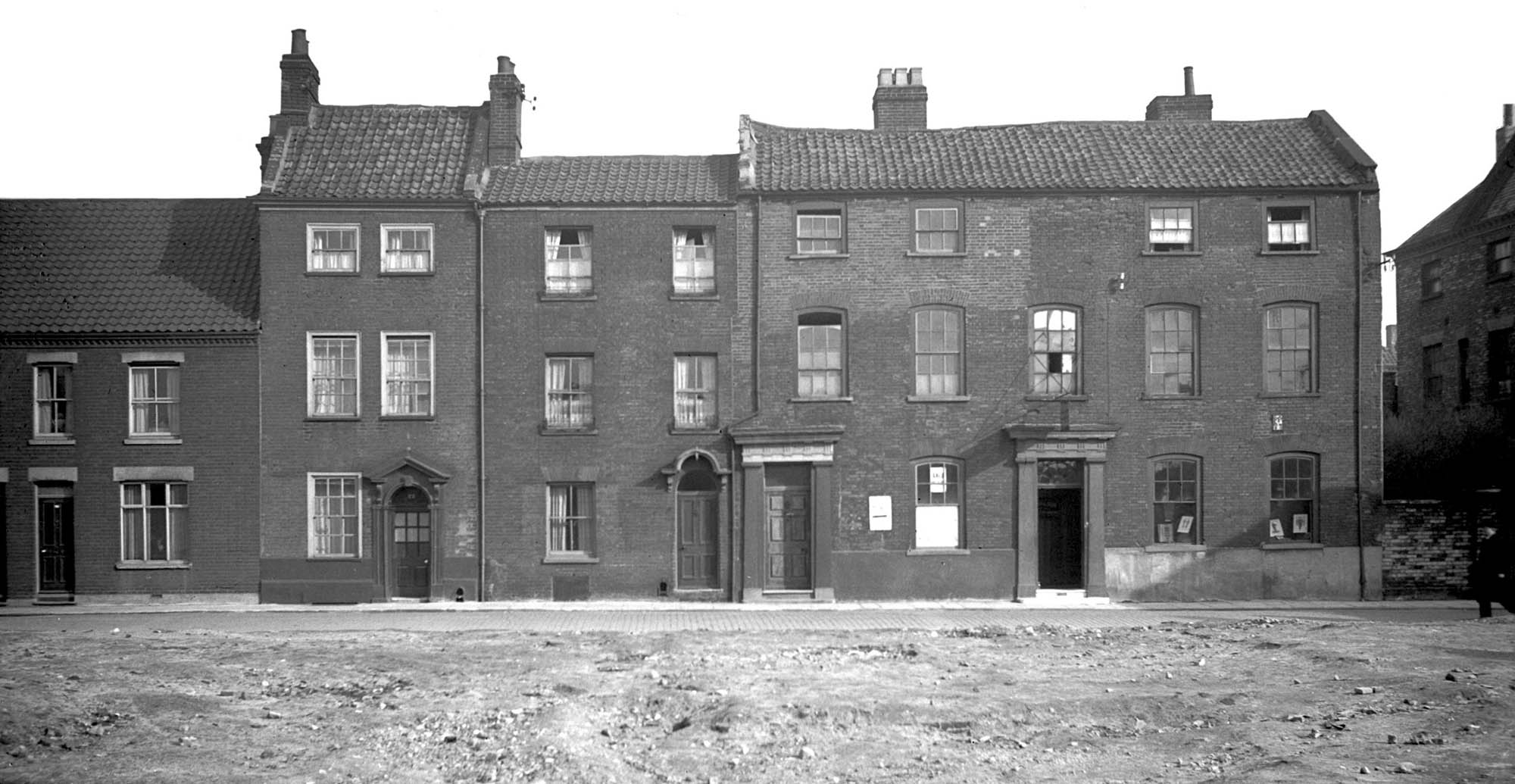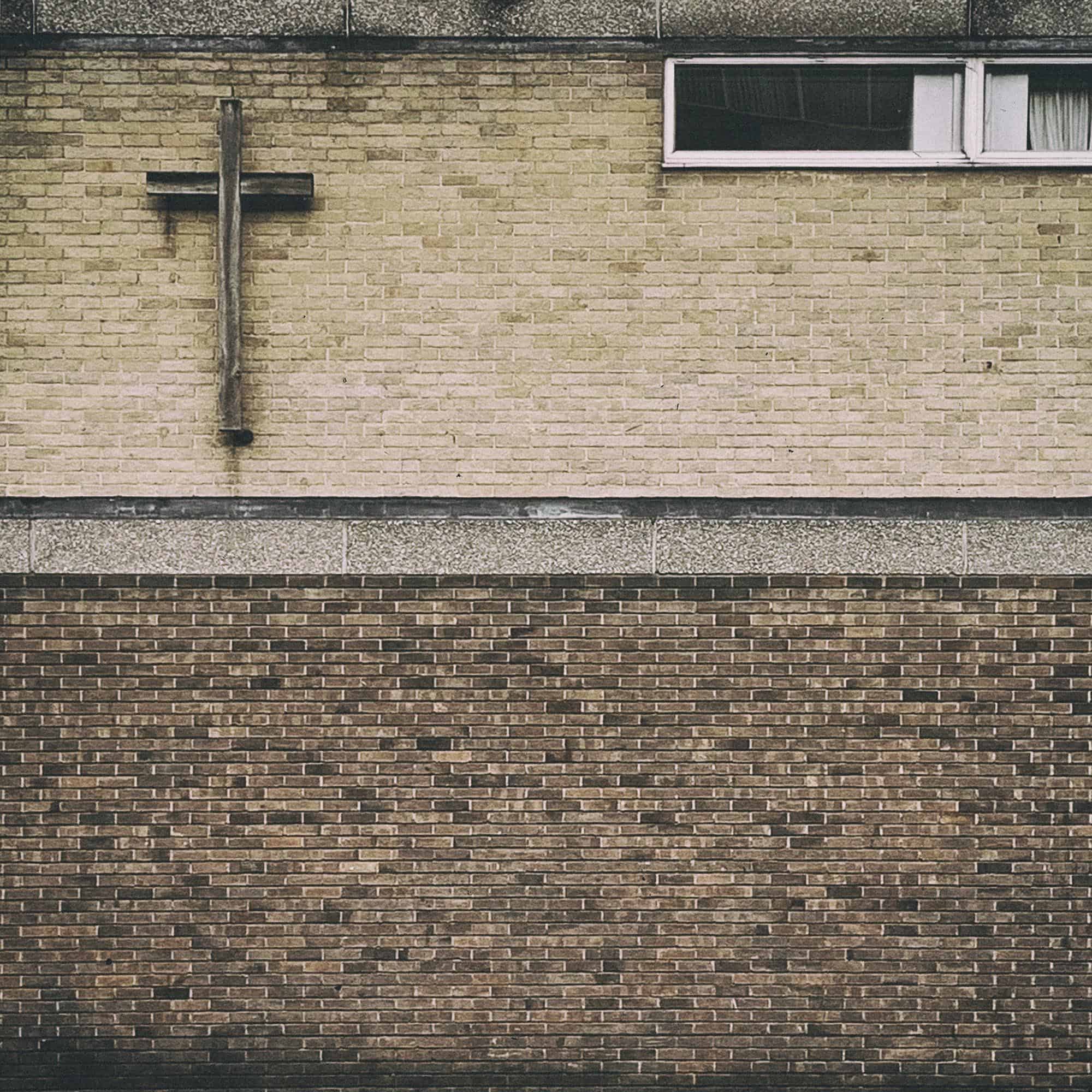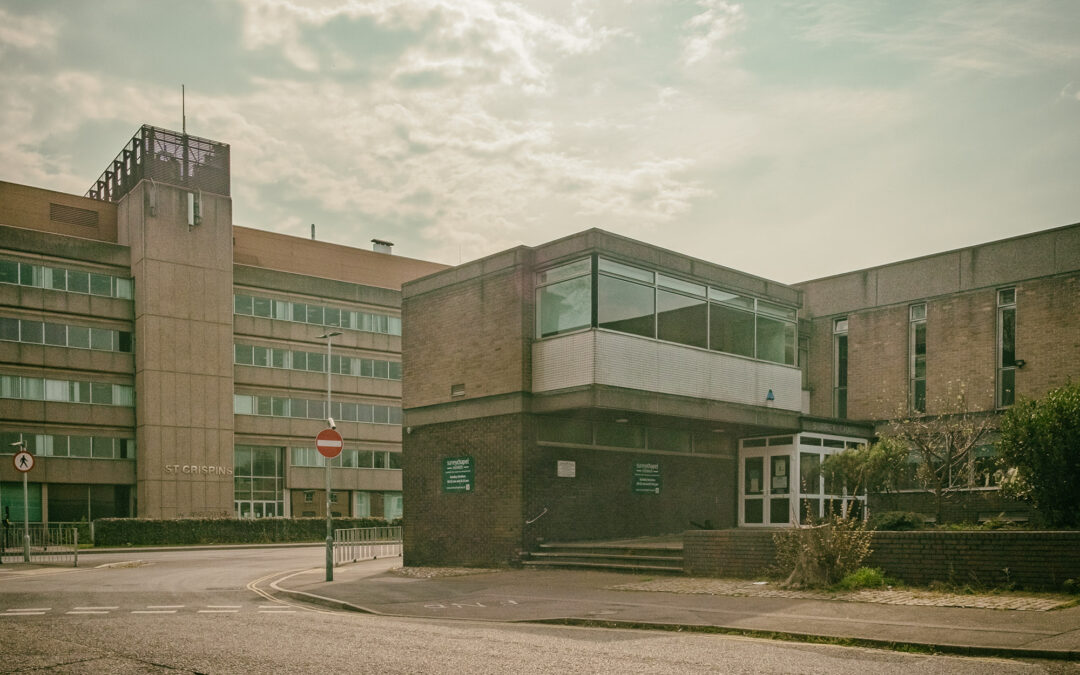I’ve recently been trying to get back into the habit of walking again, going out at all if I’m honest. I started lockdown with no work and plenty of time and walked frequently, over the last 18 months the polarity has reversed, so I’ve had less time, and too many sausage rolls, which have collected around my middle in the usual way, so I’ve started to try and get out again minus the pastry products.
Basically I suppose this replicates chunks of my various routes to work minus having a studio at the other end of it anymore. One of these involves the length of St Georges, not some phallic reference to saints and nationalism, it’s just a street if any street is ever just a street – because all routes are actually a series of overlapping, flowing, flowering stories. Because there’s a lot going on, I’ll break this up into bits, eventually, hopefully.
St Georges was previously Guildengate Street, Middle Street and occasionally St Georges Middle Street, names shift around as time rolls along and conventions change. The outer tip of it started just beyond the HMSO building on what was Botolph Street pretty much opposite where the old Odeon Cinema was until 1970 which is now a car park. This section is marked on some maps as part of Botolph Street now. Anyway, it heads inward until it’s bisected by the ring road, in this I’m going to start by covering this stretch of almost really nowhere.
Somewhere in the recesses of my mind I have really vague memory of there being buildings opposite Sovereign House, mostly the remains of a semi-derelict laundry which had filled with rubble and graffiti by the mid-eighties. Where it stood as part of a row with yards is now a surface car park; a sycamore-laced, rubble covered berm along one edge, and the ever changing graffiti-wall and buddleia free-for-all against the derelict hulk of Sovereign House that forms the back line of Anglia Square along the other.
 This stretch is a curious piece of ‘not much’ to all intents and purposes, I suspect most people don’t really think about it and probably haven’’t done since everything was demolished 50 year ago, but it hides with imperfection what it once was under gravel and fucked tarmac – large tracts of old stone setts peer through the gaps in the split road surface and tarmac infill repairs, the remnants of brick lines jostle with weeds below the chain-link fence where the building line once stood at the edge of the path that led into the city. Lost pub names conjure the with stuff along this stretch; The Duke of Sussex on the corner where a camera on a pole stands in a square of turf, closed under a compulsory acquisition order 1961, The Crown and Anchor lost under some tarmac the surface marked with redundant parking space numbers, The William IV with it’s yard opening into a garden closed as long ago as 1908, Burrows Yard, Little Cherry Tree Yard all under the tyres of Fords, Vauxhalls and Toyotas.
This stretch is a curious piece of ‘not much’ to all intents and purposes, I suspect most people don’t really think about it and probably haven’’t done since everything was demolished 50 year ago, but it hides with imperfection what it once was under gravel and fucked tarmac – large tracts of old stone setts peer through the gaps in the split road surface and tarmac infill repairs, the remnants of brick lines jostle with weeds below the chain-link fence where the building line once stood at the edge of the path that led into the city. Lost pub names conjure the with stuff along this stretch; The Duke of Sussex on the corner where a camera on a pole stands in a square of turf, closed under a compulsory acquisition order 1961, The Crown and Anchor lost under some tarmac the surface marked with redundant parking space numbers, The William IV with it’s yard opening into a garden closed as long ago as 1908, Burrows Yard, Little Cherry Tree Yard all under the tyres of Fords, Vauxhalls and Toyotas.
This was a poor but vibrant part of the old city – Norwich over the Water; a web of yards and courts, pubs, small shops, businesses, in buildings some of which were medieval in origin, they were patched, built over, around and alongside for centuries, growing, shifting and changing, but their footprints overlay settlement that goes way back. As with all our traces of life – it’s a complex system of dynamic overlaps not a series of steps. An archaeological dig in the 1990s indicated the northern area of the car park has it’s feet in the Anglo-Saxon and Anglo-Danish, there’s traces of an earlier ditch and bank, presumably with a palisade on it running across it where the city limit was before it grew and shifted outward to what are now Magdalen Gate, St Augustines Gate, St Martin’s Gate and Pockthorpe Gate.

69 to 77 St George’s Street, 24 February 1938. Lost to the ring road. Courtesy Jonathan Plunkett – George Plunkett Collection.
At the far end of the drift inward, hard up against the ring-road is the Surrey Chapel, an oddly brutalist cast-off, like a dropped stitch from the knitting together of the Anglia Square and HMSO developments. The chapel itself was set up as the Ebeneezer Chapel in Surrey Street by Robert Govett in 1854. A theologian, former curate at St Stephen’s and friend of the Bignolds, he was a charismatic character whose beliefs shifted over time which involved leaving the Church of England in favour of a lower, baptismal and more evangelical approach. The original chapel was relinquished in 1985 and demolished, the community led here to a newer building.
I’m a fan of this desire for a place to tell it’s story in tiny sentences via a plastic disk stuck to a wall, there is a short-stop urgency about these heritage plaques, a ’this happened here-ness’ that appeals to my need for short bites of intimacy with a place. These disks are part of the body language of a city, an expression of the hidden side in focus for a second like a view through a porthole. Surrey Chapel supplies them amply. There are two disks and a stone plaque here and other stories hidden beneath.
It has long been a site of worship – this was the site of St Olaf’s Church, Ólafr Haraldsson was a Norwegian king who assisted in removing Cnut from London; he was the son Of Sweyn Forkbeard who sacked Norwich in 1004 resulting in a lot of the north city being burnt in a period of what amounted to murderous tribal squabbling between various would be kings of England, Norway and Denmark, and the ensuing cloud of hagiography obscuring a lot of facts around it. But the mark is here on a wall, Probably founded in the 11th century it was demolished in 1546, the worship remains. If you look at the dividing walls next door to Surrey Chapel, there’s a reasonable chance some of the flint here and in the old outbuildings behind the Men’s Shed is reused stone from St Olaf. Cherry Lane which it sits on was a remnant of the old street was once known as Tooley Lane, itself a corruption of St Olaves Lane, say it over and over again and you’ll soon feel the words slip. This truncation appears in London too amongst other places that feature a St Olaf or St Olave. The older street name was lost to the building of the Cherry Tree pub on the corner which presumably eclipsed the importance of this transient landscape memory.
The second plaque is to William Crotch (1775 – 1847) the composer and organist who lived nearby, possibly on Green Lane which was also lost of to the flyover. His father was a a master carpenter who built an organ, William learnt to play it at a very early age. A slightly spoilt child prodigy who had to be bribed with cake to play, he went on to become the first principle of the Royal Academy of Music in 1822. Also a nice piece of nominative determinism in action. Crotch the Musician rather than a gusset manufacturer. Oddly his name comes from the Old Norse krókr meaning hook or fork.
Perhaps the most interesting plaque though is a transplant, it’s on the inside face of the courtyard formed by the chapel and is to Thomas Bilney born in Norwich in 1495 – “Blessed Martyr of God – Spiritual father of the reformation of England”. Originally erected in 1931 by Henry Fowler and the subscribers of the Protestant Alliance, it has at some point been removed from it’s original location and replaced with a slightly more oddly sectarian and larger panel with more names on it, and this was moved here.
Interestingly Bilney didn’t apparently consider himself a protestant, he preached against saint and relic veneration and was heartily against pilgrimages, but he accepted the authority of the church, the pope and believed in transubstantiation; the whole bread and wine being the body and blood of Christ thing. He was allowed to continue preaching as these were apparently minor deviations from the rules which were overlooked until Cardinal Wolsey took exception in 1526. He was then basically dragged in, given a caution and sent away.
This was all fine until someone took exception to a sermons he gave in London and then Ipswich. The latter resulted in him being dragged from the pulpit, charged with heresy and slung in the Tower of London until he submitted and recanted. He appears to have lived quite quietly for two years, whilst struggling with his desire to preach what he considered to be the truth. Locked out of the churches he began preaching outside, finally returning to Norwich where he was caught doing so.
The last Roman Catholic Bishop of Norwich Richard Nykke convened a convocation at the cathedral, basically a kangaroo court, an article was drawn up. As a result Bilney was executed, horrifically, by being burnt to death on 19 August 1531 at the Lollards Pit on Riverside Road. Nykke is alleged to have said ‘I fear I have burned Abel and let Cain go’, a reference presumably to the wavering nature of England’s religious organisation at that moment – 3 years later the act of supremacy separated Henry VIII from Rome and a year after that the dissolution began with an erasure of a lot of religious symbolism, and church property being stripped back and given to the crown and associated gentry in a massive swing of power.
Latterly it appears the Bishop paid in a some other small way too as he was brought before the King’s Bench and fined for Bilney’s execution without state authority. The fine was paid to Henry VIII and was used to pay for the windows in King’s College Chapel in Cambridge.
And this is where history does that oddly touching thing and I can let myself partly back into the story we’re all part of in some small elusive manner that we may not realise. My Great Great Great Grandfather on my mother’s side was an engraver and draughtsman in Cambridge in the late 18th century – Joshua Kirby Baldrey. He produced hand-coloured engravings including his prize piece – the East Window of Kings College Chapel, which he sold. So this odd little building always makes me think in a sequence that leads to a man who does similar things in his life to me, who I share a certain degree of helical base-cell structure with. He was a satirist too, scratching a living making scratches before dying in poverty with 11 children because condoms didn’t exist yet.
Oddly the most memorable thing about the Chapel isn’t remembered at all on it’s outside but has been celebrated by the Chapel community recently as it wasn’t really common knowledge until 2015. It concerns Elsie Maud Tilney. She was a member of the Chapel and a missionary her zeal for which is commendable. Born in 1893, by the age of just 27 she was sent to Nabeul in Tunisia, then on to Djerba. In 1934 she moved on to Paris and was working within the Jewish communities.
By the start of the war Elsie was largely assisting Jewish refugees escape. As a British national she was in turn interned at Fronstalag 121 in Vittel in May 1941. Here she was employed in the camp archive where she continued to assist by hiding papers which identified other internees as Jewish. In 1944 she saved the life of Sasha Kawac a young Polish Jew, by hiding him in her bathroom for several months. After release she continued working in Africa until 1960 when she returned to Britain and then retired to Florida. As is often the way, she didn’t really tell anyone about any of this and her secret life could have vanished with her when she died in 1974.
In 2015 a researcher looking into his family history discovered his mother Ruth Buchholz had been rescued from Nazi annexed Austria by her in 1939. And so the story unfolds like map. Elsie is now remembered along with 25,000 others who put their own lives at risk during the second world war to save Jewish people from the Nazis.
In the mundane, so often hides the extraordinary.




Elsie Maud Tilney, what a wonderful person. Nice read thank you.